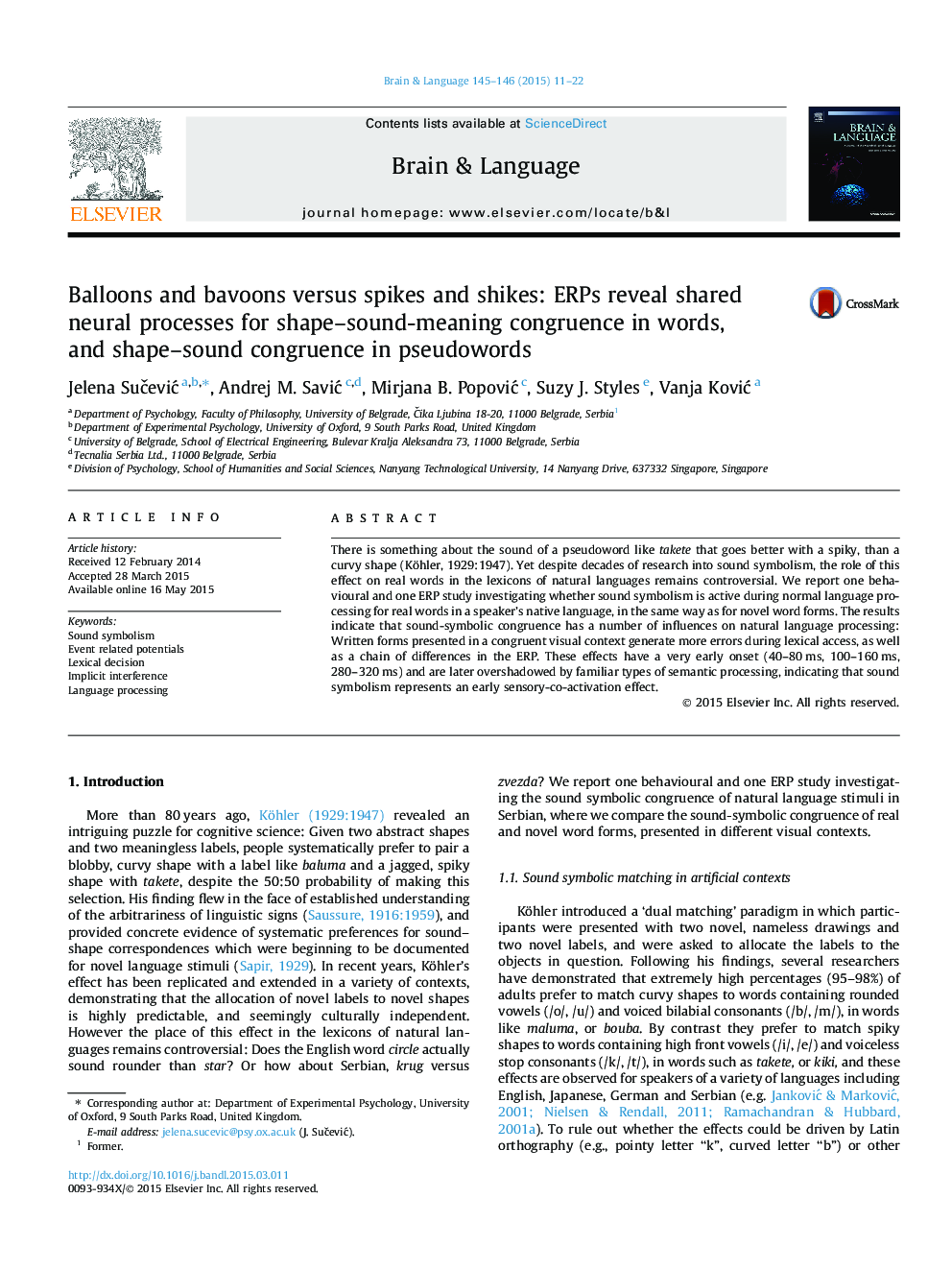| Article ID | Journal | Published Year | Pages | File Type |
|---|---|---|---|---|
| 7284279 | Brain and Language | 2015 | 12 Pages |
Abstract
There is something about the sound of a pseudoword like takete that goes better with a spiky, than a curvy shape (Köhler, 1929:1947). Yet despite decades of research into sound symbolism, the role of this effect on real words in the lexicons of natural languages remains controversial. We report one behavioural and one ERP study investigating whether sound symbolism is active during normal language processing for real words in a speaker's native language, in the same way as for novel word forms. The results indicate that sound-symbolic congruence has a number of influences on natural language processing: Written forms presented in a congruent visual context generate more errors during lexical access, as well as a chain of differences in the ERP. These effects have a very early onset (40-80Â ms, 100-160Â ms, 280-320Â ms) and are later overshadowed by familiar types of semantic processing, indicating that sound symbolism represents an early sensory-co-activation effect.
Related Topics
Life Sciences
Neuroscience
Biological Psychiatry
Authors
Jelena SuÄeviÄ, Andrej M. SaviÄ, Mirjana B. PopoviÄ, Suzy J. Styles, Vanja KoviÄ,
